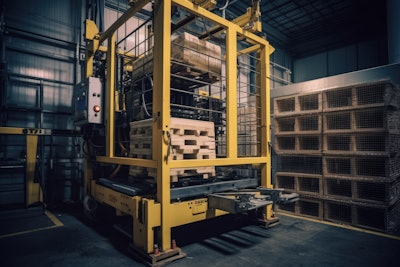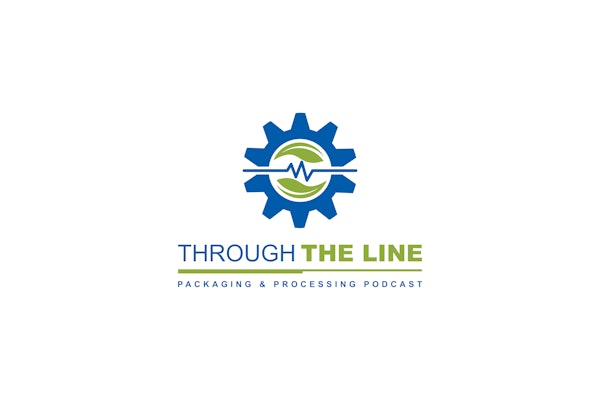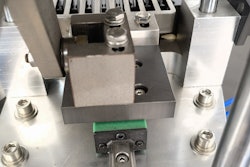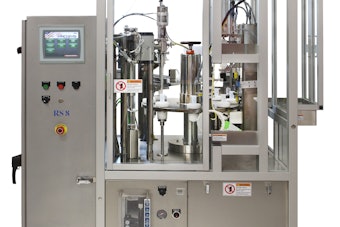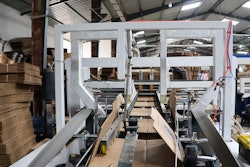Palletizing is loading anything onto a pallet, while unitizing is loading multiple items onto a pallet in a layered pattern. Pallets are the workhorses of supply chains worldwide, and the vast majority of pallets carry unit loads. Palletizers build unit loads faster and of greater integrity than is possible by doing so manually. Therefore, palletizers promote safety, efficiency, productivity, and cost savings throughout the world’s supply chains.
Palletizers are testaments to the ingenuity and innovation of that sector of the packaging machinery industry. Features and capabilities are diverse, even though palletizers only come in two categories: conventional and robotic.
Conventional palletizers are classified as low-level or high-level, reflecting how items are fed into the palletizer: floor-level or above floor level, respectively. Inline palletizers are so named because they are positioned at the end of the production line as opposed to farther away. Nonetheless, they, too, are conventional.
Robotic palletizers are classified variously (e.g., cartesian and gantry) and do their work via a mechanical arm. It’s the end-of-arm tooling (EoAT) or fitments that give robotic palletizers their abilities to lift, orient, and place items. Those fitments include suction cups, clamps, or forks, among other styles. Robotic palletizers typically are positioned between a stack of pallets and an item infeed conveyor.
Which type is best for a given application is a determination requiring a systematic approach of measuring tradeoffs, because each type has advantages and disadvantages. Still, any chosen palletizer must score acceptably on three criteria: safety, flexibility, and performance. Safety relates to workers’ access to the palletizer when required and lockout features at all other times. Flexibility is a measure of not only the palletizer’s compatibility with present needs, but also its adaptability to projectable future needs. Performance is how well the palletizer operates, i.e., speed, throughput, and uptime.
Conventional palletizers form rows, then layers, and finally loads, during which, the items are bumped, turned, and pushed into the desired orientation. Throughout, items are not lifted from a surface, such as an infeed conveyor.
Generally, low-level palletizers are of a simpler construction than high-level palletizers, have a smaller footprint, and are less expensive. Since low-level palletizers operate at floor level, it’s easier for workers to notice when something goes amiss. High-level palletizers provide greater throughput than lower-level palletizers. A main reason is that they raise and lower the pallet itself as layers are loaded, thereby facilitating load building.
Aside from their herein mentioned (and unmentioned) differences, both levels of palletizers share certain characteristics. A main one is that they mostly are limited to square/rectangular secondary packaging, such as cartons, cases, and trays. On a countervailing note, both palletizers can accommodate the aforementioned secondary packaging in a variety of sizes without complicated changeover—great for companies that have multiple SKUs.
Robotic palletizers’ calling card is two-fold: precise, unerring placement of items onto the pallet, and the ability to palletize additional types of secondary packaging, such as bags, pails, or bales. Said precision and versatility are had at the sacrifice of speed and of tolerance of dimensional variations as to pallet and secondary packaging. The sacrifice of speed, however, is lessened in instances in which the robotic arm handles multiple items at a time, rather than individually.
Robotic palletizers are more expensive than conventional palletizers, taking into account acquisition price, installation, maintenance, and modifications. With multiple robotic palletizers, high-volume upstream operations can be handled on a par with conventional palletizers. One more comparison is that robotic palletizers operate within less space than what’s required of conventional palletizers. The smaller footprint of robotic palletizers is due to their ability to move along three axes and an almost circular arc.
Regardless of how the types of palletizers are compared and contrasted, suppliers face this competitive reality: customers want every benefit that there is to be had. That reality accounts for solutions marketed as “hybrids.” One example is to use conventional palletizing for forming a layer, then to use robotic palletizing for placing a layer onto a pallet or onto a previously placed layer.
This discussion of palletizers has so far only made a deep scratch of the surface. For one thing, no matter how descriptive the words, they’re not the equal to observing a fully integrated palletizer operating on a packaging line. Under such a scenario, one can observe the integration of the palletizer with various conveyors. One further can observe the integration between the palletizer and upstream operations. As for upstream operations, some can be built into the palletizer itself. And although stretch wrapping is traditionally downstream from palletizing, that operation is built into palletizers that simultaneously stretch wrap as the load is being built. That fact notwithstanding, stretch wrapping will be covered as a stand-alone operation in my next article.
Sterling Anthony, CPP, consults in packaging, marketing, logistics, and human-factors. A former faculty member at the Michigan State University School of Packaging, his contact info is:100 Renaissance Center, Box-176, Detroit, MI 48243; 313/531-1875; [email protected]
